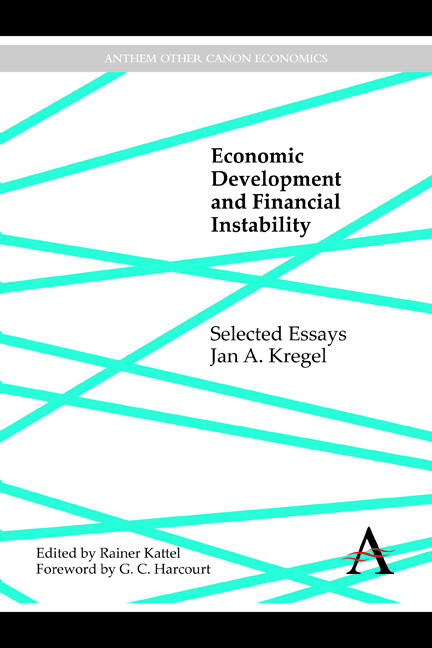Book contents
- Frontmatter
- Contents
- Foreword
- Publication History
- I Theoretical Discussions
- 1 Financial Markets and Economic Development: Myths and Institutional Reality
- 2 External Financing for Development and International Financial Instability
- 3 Capital Flows: Globalization of Production and Financing Development
- 4 Some Risks and Implications of Financial Globalization for National Policy Autonomy
- 5 Two Views on the Obstacles to Development
- 6 Can We Create a Stable International Financial Environment that Ensures Net Resource Transfers to Developing Countries?
- 7 Natural Instability of Financial Markets
- 8 Trying to Serve Two Masters: The Dilemma of Financial Regulation
- II Finance for Development
- III The Crisis in the US and the EU
- Index
7 - Natural Instability of Financial Markets
from I - Theoretical Discussions
Published online by Cambridge University Press: 05 November 2014
- Frontmatter
- Contents
- Foreword
- Publication History
- I Theoretical Discussions
- 1 Financial Markets and Economic Development: Myths and Institutional Reality
- 2 External Financing for Development and International Financial Instability
- 3 Capital Flows: Globalization of Production and Financing Development
- 4 Some Risks and Implications of Financial Globalization for National Policy Autonomy
- 5 Two Views on the Obstacles to Development
- 6 Can We Create a Stable International Financial Environment that Ensures Net Resource Transfers to Developing Countries?
- 7 Natural Instability of Financial Markets
- 8 Trying to Serve Two Masters: The Dilemma of Financial Regulation
- II Finance for Development
- III The Crisis in the US and the EU
- Index
Summary
What Is Financial Instability?
It is usually believed that economics is the study of market exchange—this is the “catalactic” view associated with Mill. This is the approach behind supply and demand, the two sides of an economic transaction. Economists explain how individuals reach their decisions concerning supply and demand by reference to a behavioral ideal—rational economic man. This has led to the “efficient markets” hypothesis, which implies that any and all information that is required for rational economic decisions is contained in prices determined in competitive markets. However, this approach has one important drawback. As Ronald Coase (1991) has pointed out, it provides no explanation of markets themselves. This is confirmed by the fact that financial institutions that comprise the markets exist because they reject the efficient market hypothesis. Every offering memorandum for an investment fund contains the affirmation that the fund will achieve above-market returns because of its ability to exploit market imperfections.
There is an alternative approach that views economic exchange as time transactions—what, in finance terminology, are called “spot-forward swaps.” This approach argues that there is no such thing as an instantaneous, simultaneous exchange that exerts no influence after it occurs. Time transactions involve a commitment to do something today against the promise of a commitment in the future. This is true of both real and financial transactions.
- Type
- Chapter
- Information
- Economic Development and Financial InstabilitySelected Essays, pp. 99 - 118Publisher: Anthem PressPrint publication year: 2014



